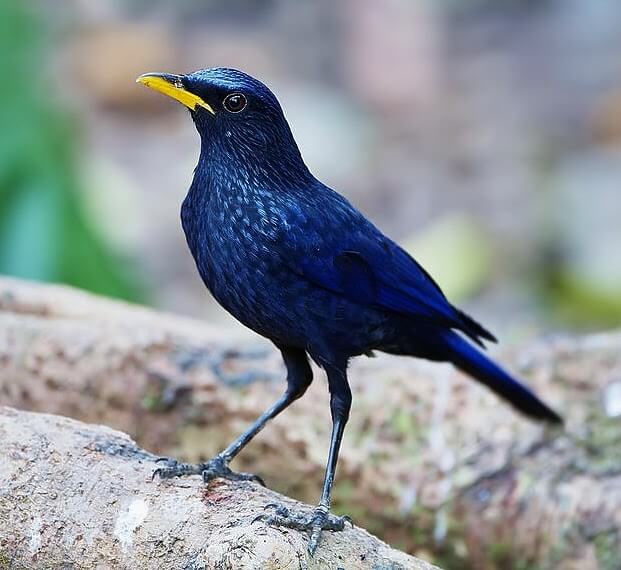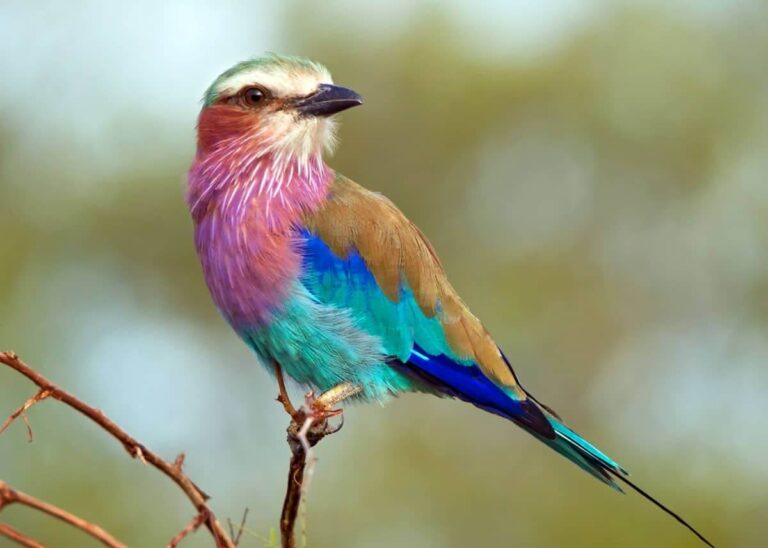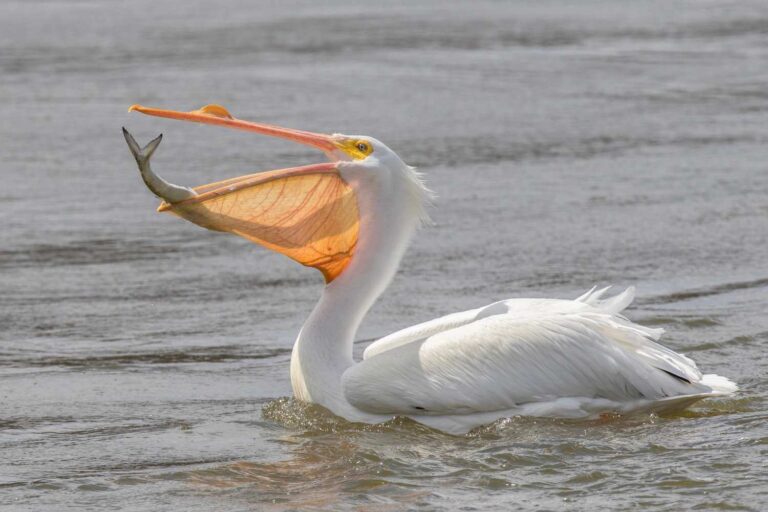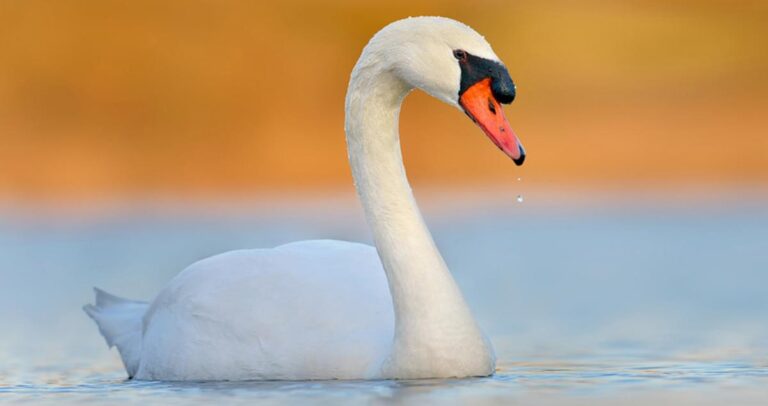Yellow-billed Hornbill (Tockus leucomelas): An In-Depth Look
The Yellow-billed Hornbill (Tockus leucomelas), commonly known as the Southern Yellow-billed Hornbill, is one of the most iconic birds found in Southern Africa. This bird is a marvel because of its striking appearance, fascinating behavior, and strong connection to African ecosystems.
This article will examine its scientific classification, physical characteristics, habitat, behavior, diet, reproduction, predators, and conservation status. Additionally, we’ll dwell on its evolutionary history, interesting facts, and relationship with humans.
Contents
Scientific Classification
- Kingdom: Animalia
- Phylum: Chordata
- Class: Aves
- Order: Bucerotiformes
- Family: Bucerotidae
- Genus: Tockus
- Species: Tockus leucomelas
The Yellow-billed Hornbill belongs to the family (Bucerotidae) and is known for its unique bill structure and vibrant coloring. The species name leucomelas is derived from Greek, meaning “white-“lack,” referring to its contrasting plumage.
Physical Characteristics

Size and Appearance:
Yellow-billed Hornbills are medium-sized birds, reaching about 48-50 cm (19-20 inches) in length with a wingspan of around 60 cm (24 inches). They typically weigh between 150 to 200 grams.
Distinctive Bill:
The bird’s bird’secognizable feature is its large, curved, yellow bill, which has a casque (a hollow, helmet-like structure) on top, especially prominent in males. The bill serves both functional and display purposes for feeding and territorial disputes.
Plumage:
Their feathers are a blend of black, white, and gray. The wings are primarily black with white spotting, while the body and head are a mix of white and light gray. The black tail feathers provide a striking contrast, and the skin around the eyes is pink, giving them a distinctive look.
Habitat
Range:
The Yellow-billed Hornbill is widely distributed across Southern Africa, inhabiting South Africa, Botswana, Namibia, Zimbabwe, and Mozambique.
Preferred Habitats:
These birds thrive in various environments, including dry savannas, thornveld, and open woodlands. They prefer areas with sparse tree cover, where they can forage on the ground. They are also commonly found near human settlements and are known to adapt well to fragmented landscapes.
Behavior
Social Structure:
Yellow-billed Hornbills are often observed in pairs or small family groups, but they may also form larger gatherings, especially around abundant food sources. Their vocalizations are an important part of their social behavior, characterized by loud calls and cackles used for communication within the group.
Flight and Foraging:
These birds are capable of quick, direct flight, though they spend a significant amount of time on the ground, foraging for food. Their flights are typically short, moving from one feeding ground to another.
Bill Use:
Their large bills are used for digging into soil and leaf litter to find insects and other small animals. They are also known to toss food into the air before swallowing it, a functional and characteristic behavior.
Diet
Omnivorous Feeders:
Yellow-billed Hornbills are omnivores with a diet primarily consisting of small insects like grasshoppers, beetles, and termites. They also consume small reptiles, seeds, and fruits. They are opportunistic feeders, often scavenging near human settlements for discarded food scraps.
Foraging Techniques:
While they forage on the ground, they use their bills to dig and probe the soil for insects. They are also adept at catching prey directly from the air or vegetation.
Reproduction
Mating Behavior:
Yellow-billed Hornbills are monogamous and maintain pair bonds throughout the breeding season. Males perform elaborate courtship displays, offering food to females and engaging in loud calling.
Nesting:
The species practices a unique form of nesting behavior. The female seals herself inside a tree cavity using mud, leaving only a small opening through which the male passes food. She remains inside until the chicks are old enough to fledge, which can last several weeks. During this time, she molts her feathers and depends entirely on the male for sustenance.
Chick Rearing:
Once the chicks are ready, the female breaks out of the cavity, and both parents take turns feeding the chicks until they are fully independent.
Predators and Threats
Natural Predators:
Yellow-billed Hornbills face threats from predators, including snakes, birds of prey, and small carnivores like mongooses, which can raid nests.
Human Impact:
While generally adaptable, these birds are sometimes threatened by habitat loss and the fragmentation of their environments due to agriculture and urbanization.
Conservation Status
IUCN Red List:
The Yellow-billed Hornbill is currently classified as Least Concern by the International Union for Conservation of Nature (IUCN). Their wide distribution and adaptability to different environments have allowed their population to remain stable.
Conservation Efforts:
Despite their stable status, conservation efforts focus on protecting savanna ecosystems and minimizing habitat destruction, which could eventually impact hornbill populations.
Interesting Facts
- Clever Problem-Solvers: Yellow-billed Hornbills have been observed using tools in captivity, showcasing their intelligence and adaptability.
- Breeding Rituals: The female in the nest cavity during breeding season is a fascinating survival strategy, protecting her and the chicks from predators.
- Symbolism in African Cultures: These birds hold cultural significance in several African communities, often seen as good fortune and fertility symbols.
Evolutionary History
Hornbills are part of an ancient bird lineage that diverged from other avian groups millions of years ago. Their unique bill and nesting behaviors have evolved as specialized adaptations to their ecological niche. Fossil evidence suggests that the ancestors of modern hornbills existed in tropical environments, where they developed the distinctive casque on their bills.
Relationship with Humans
Yellow-billed Hornbills are often found near human settlements, where they forage for food scraps. Their familiarity with people has made them a common sight in rural areas, where they are generally tolerated and even admired for their beauty and unique behaviors. In some African traditions, they are considered good omens.
Conclusion
The Yellow-billed Hornbill (Tockus leucomelas) is a fascinating bird that embodies the complexity and beauty of Southern Africa. From its distinctive yellow bill and unique nesting habits to its omnivorous diet and adaptability to diverse habitats, this bird plays a vital role in its inhabitable ecosystems. While currently not endangered, conservation efforts remain important to ensure their survival in the face of habitat changes. As both an ecological actor and a cultural symbol, the Yellow-billed Hornbill continues to capture the imagination of bird enthusiasts and nature lovers alike.
- Are Rottweilers Good With Kids? Reasons & Training Tips - 17 September 2025
- How Long Are Dogs Pregnant: Complete Guide - 16 September 2025
- German Shepherd Doberman Mix: Info, Pictures, Care & More - 11 September 2025







